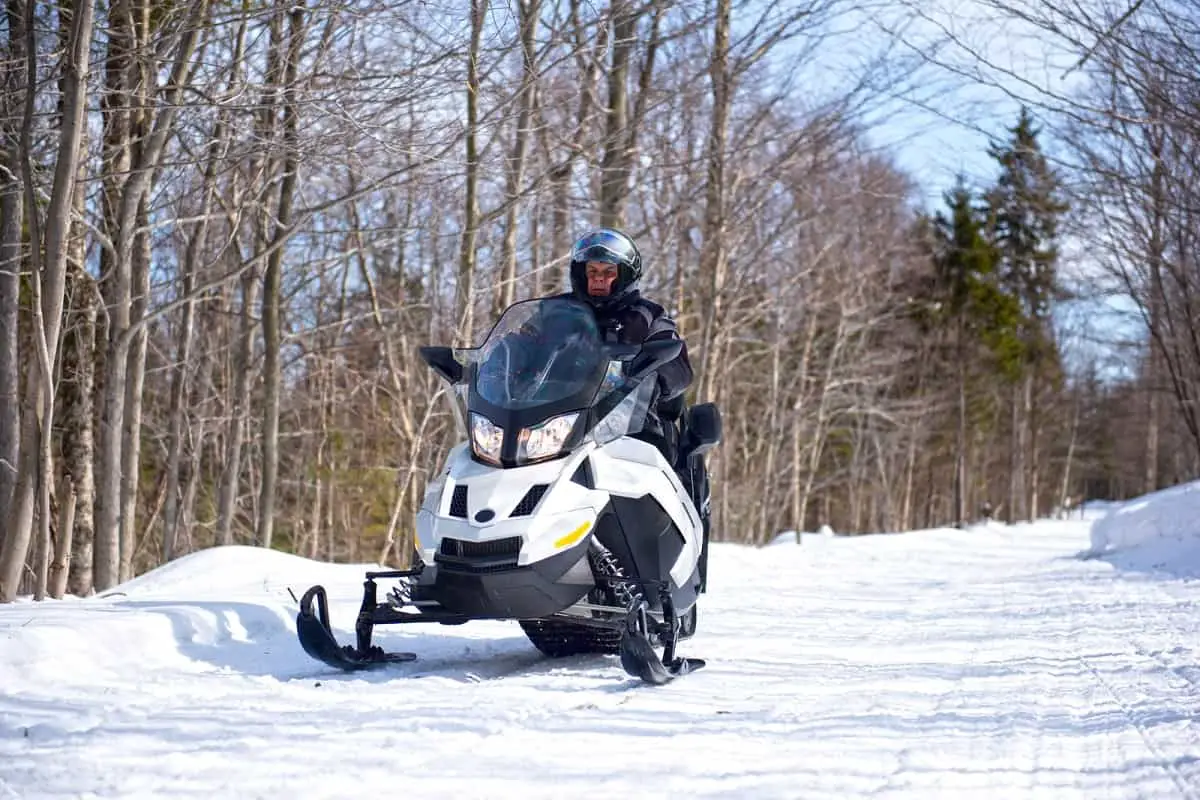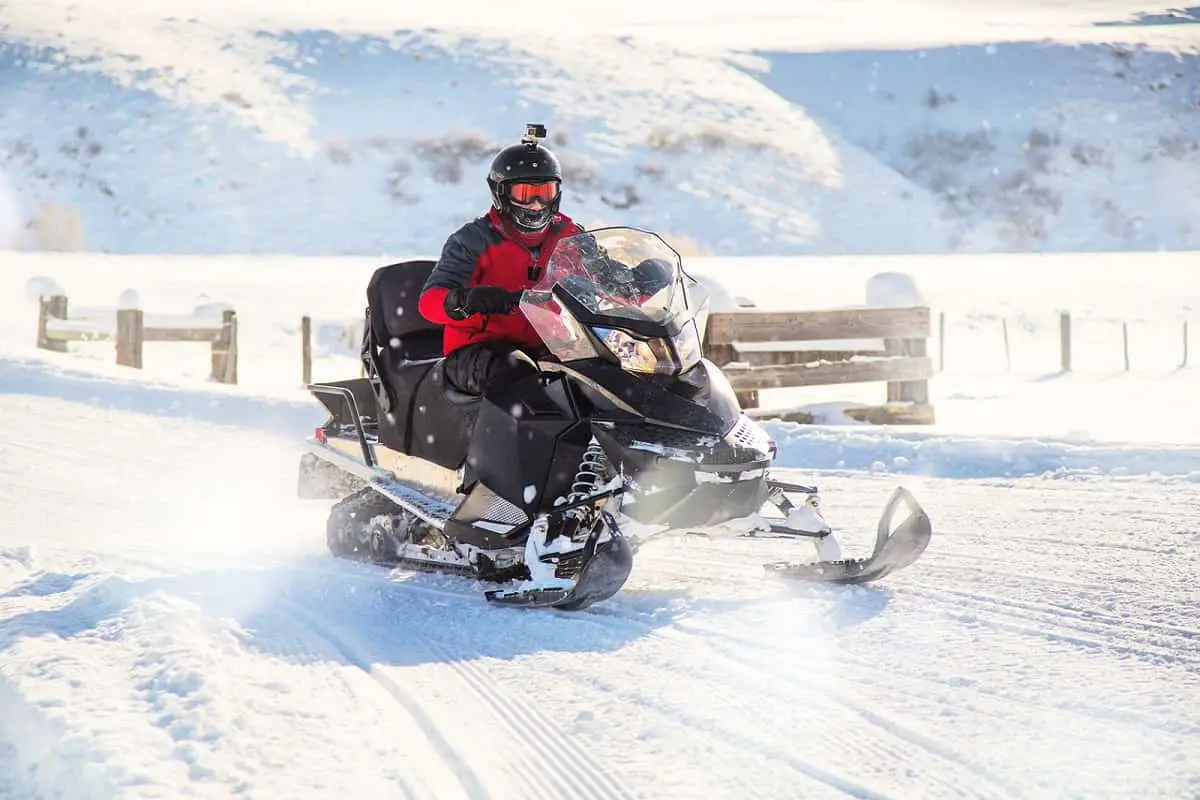How Often Should Your Snowmobile Helmet Be Replaced?
Snowmobiles are the jet skis of winter, riding the snowdrifts like a jet ski rides the waves. They’re a blast to operate and the best part is, that all you have to do is open up the throttle and you’re cruising across the snow as fast as you want to go.
Of course, as you would for an ATV, motorcycle, or yes, even a jet ski, you should wear the right head protection and that doesn’t mean throwing on your favorite hat.
It means a DOT, Snell, or ECE-certified helmet that will protect your head if you happen to steer right into a tree. You want to see another day on the back of your snowmobile after all. Speaking of head protection, how often should your snowmobile helmet be replaced? Does it matter?
Snowmobile helmets do not have an expiration date, . . . . nonetheless, manufacturers will usually recommend replacing your snowmobile helmet after 3 to 5 years, but there is no legal obligation to do so.
Page Content

Disclosure: As an Avantlink and Amazon Associate, we earn from qualifying purchases. Disclosure Statement.
Do Snowmobile Helmets Expire?
Snowmobile helmets do not have an expiration date, but there will be a date of manufacture label as required by DOT certification. Nonetheless, manufacturers will usually recommend replacing your snowmobile helmet after 3 to 5 years, but there is no legal obligation to do so.
So replacing your snowmobile helmet falls squarely on your shoulders and is based entirely on your own, best judgment. Now, if you headbutt the above-mentioned tree at 40mph then yes, your snowmobile helmet is definitely going to be expired and you should swap it out for a new one.

Manufacturer recommendations are going to tell you that it “expires” (they may not use the exact word but will strongly insinuate it) after 3 to 5 years of use, however, there is no official expiration date to speak of.
When Should You Replace Your Snowmobile Helmet?
Choosing whether or not to replace your snowmobile helmet boils down to common sense scenarios. Much of it simply depends on the condition of your helmet.

If your helmet takes a direct, high-force impact, then you must replace it as soon as possible, if not sooner. The damage that such a collision causes may not be readily apparent but that doesn’t mean that the helmet has not been compromised in some way.
Outside of that, the level of wear and tear over time is enough to justify replacing it. If your straps and the fitting system within are old, coming apart, or fraying, it’s probably a good idea to replace them.
SUGGESTED: How to Keep Your Snowmobile Helmet Visor From Fogging
The technology in these helmets is always improving as well and if you see a new standard that you really like and feel would make you safer, then by all means. However, if your snowmobile helmet is five years old, never suffered a collision, and looks relatively new, there’s no reason to replace it.
How Long is a Snowmobile Helmet Good For?
If you’re the kind of person that is very meticulous and you like to take care of your equipment and you’re pretty gentle with your helmet, it has the potential to last 10 years or more.
That’s the case with a lot of snowmobile owners, especially those that use their snowmobiles in a more utilitarian manner, like hunters and those just looking to go from point A to point B without ripping donuts in the Walmart parking lot.
To get the best mileage out of your helmet, you also need to consider how well you take care of it during the off-season. You wouldn’t want to grab your helmet at the start of the season only to find that it’s covered in mold with a family of insects living inside.
Heavy-duty use is a little different. If you’re the kind of person that spends a ton of time out on the snowmobile and you like to nonchalantly toss your helmet into the back of the truck then you may want to replace yours when the spring arrives and the snow recedes for the year.
With all of that being said, the “official” recommendations that suggest replacing your snowmobile helmet every 3 to 5 years are just that, recommendations. They aren’t laws nor expiration dates, and they’re certainly not written in stone.
This content was originally published on headsdontbounce.com. If it appears on another website, it is a violation of the copyright owned by headsdontbounce.com.

Why Should You Replace Your Snowmobile Helmet?
Snowmobile helmets, like most other helmets, are in a constant state of evolution, technologically speaking.
They’re improving all of the time and, even though it would be a perfectly reasonable decision to hold on to a helmet that’s in great condition for years, purchasing a new one with superior technology is just as reasonable, if not more so.
You may want to replace it for aesthetically pleasing reasons alone, much in the same way that fountain pen enthusiasts want a cooler-looking pen or skateboarders want that new skateboard with the floating wheels and unbreakable board.
The reality is, if you feel like your snowmobile helmet is compromised, either through direct observation or after an impact, then you should replace it.
How Often Should Your Snowmobile Helmet Be Replaced?
Ultimately, your snowmobile helmet should be replaced if you feel that it needs to be replaced. It’s important to stay safe so it’s not a decision that you should delay indefinitely. However, it’s not set in stone by a manufacturer either.
If you’re involved in an impact or if there are observable deficiencies in the helmet, then it’s definitely time for a new one. Other than that, it’s up to you. Most importantly, however, is to have a good time and stay safe.
If you liked this post, why not share it with your friends.
